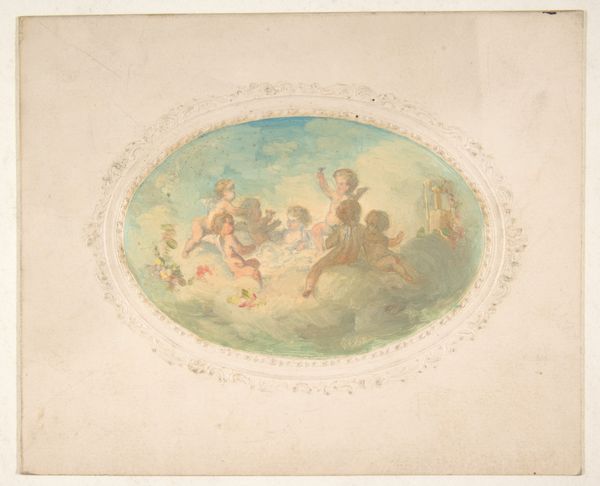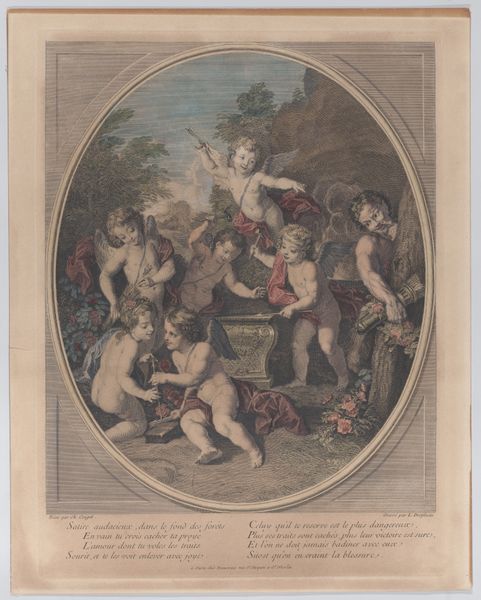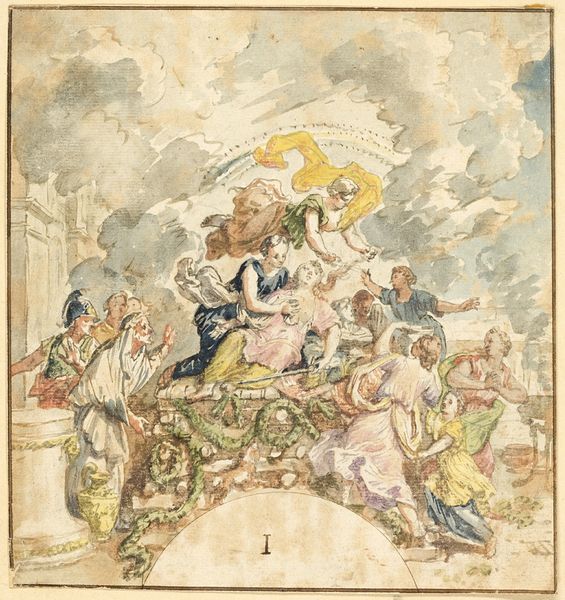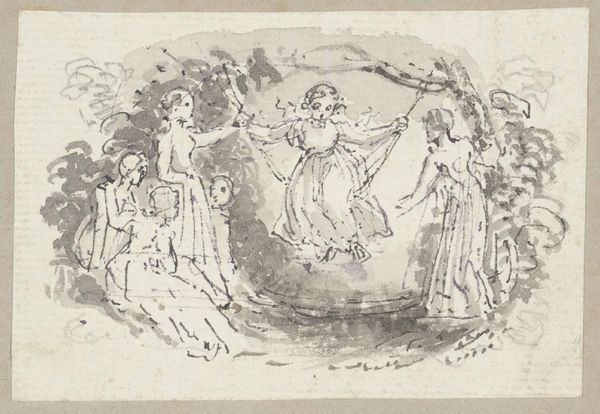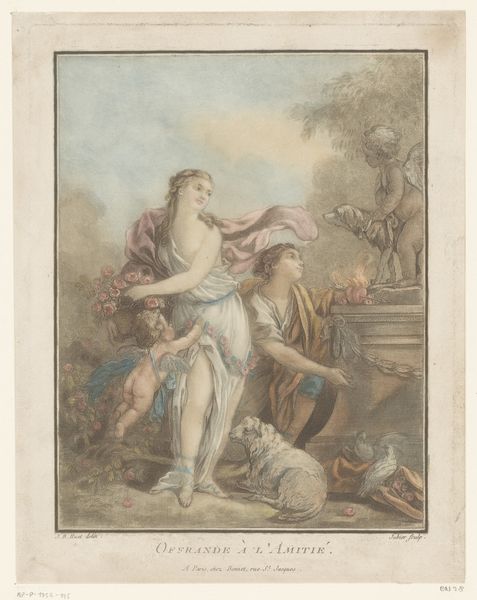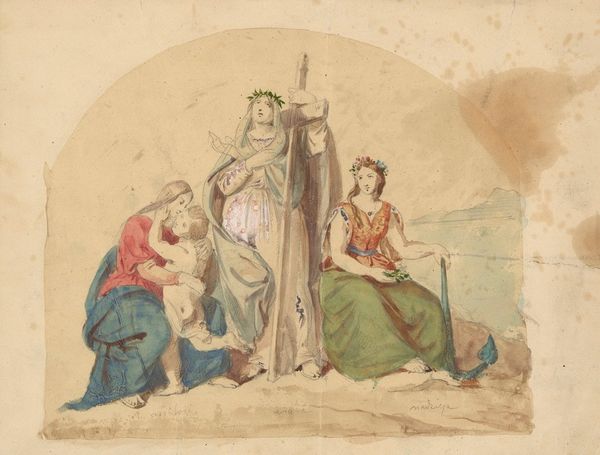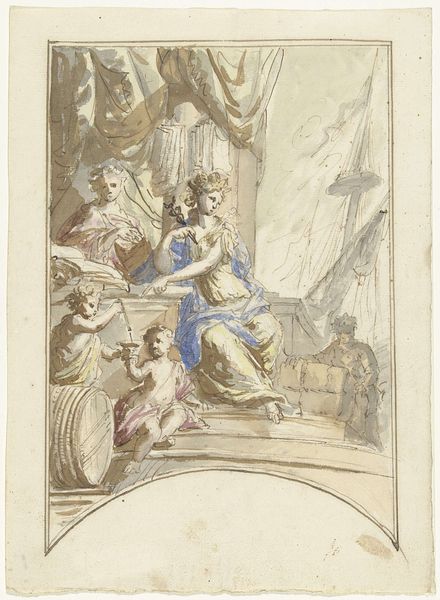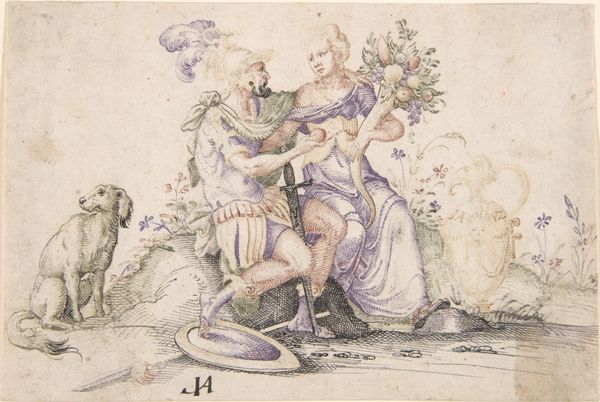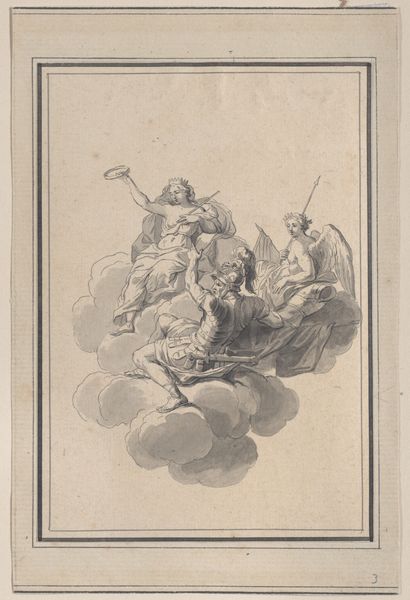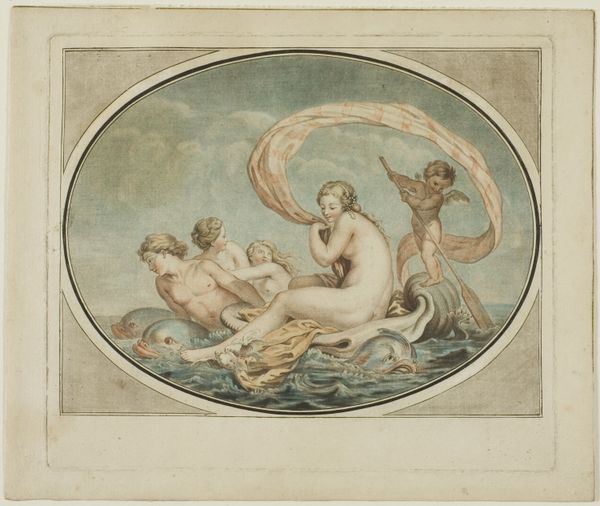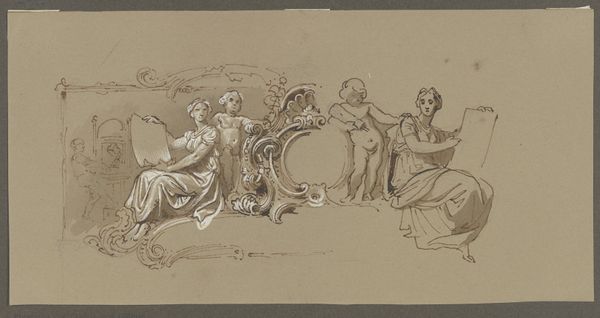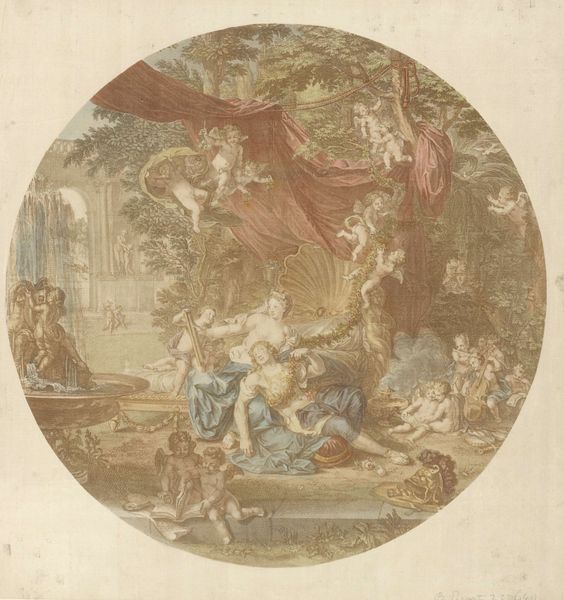
Allegory of Abundance (Sketch for a Ceiling Painting) n.d.
0:00
0:00
drawing, print, paper, watercolor, ink, chalk, black-chalk
#
drawing
#
neoclacissism
#
water colours
#
allegory
# print
#
paper
#
watercolor
#
ink
#
chalk
#
history-painting
#
academic-art
#
italy
#
black-chalk
#
watercolor
Dimensions: 233 × 304 mm
Copyright: Public Domain
Editor: So, here we have Domenico Pozzi's "Allegory of Abundance," a watercolor, ink, and chalk drawing for a ceiling painting. The oval shape and the pastel colors give it an ethereal feel, but something about the central female figure feels very...grounded. What do you see in this piece? Curator: Beyond the neoclassical style and allegorical representation, I see a loaded statement about power, gender, and societal values. Abundance, historically, hasn’t been equally distributed. The sketch asks us, who benefits from this 'abundance,' and at whose expense? The central female figure, often interpreted as a symbol of prosperity, can be reframed within a patriarchal system where her very image reinforces existing hierarchies. Is she a figure of empowerment, or an emblem of idealized feminine passivity? Editor: That’s a compelling point. I hadn't considered the unequal distribution aspect of the image before. So, are you suggesting that Pozzi might be subtly critiquing the very concept of "abundance?" Curator: Not necessarily critiquing, but participating in a visual language that reflects and reinforces the power structures of his time. Neoclassicism, after all, drew inspiration from a Greco-Roman past deeply intertwined with slavery and conquest. The sketch can prompt discussion around this idea of social exploitation, challenging the viewer to look at history from marginalized perspectives and cultural inequities, rather than to automatically connect art with progress and development. The winged figure placing a crown suggests legitimacy and authorization - whose and by whom? Editor: It really changes how you look at it! I was initially focused on the beauty of the piece, but thinking about it this way brings up all sorts of questions. Curator: Exactly! That is why we must look at everything critically. Editor: That definitely provides a richer context for appreciating—and questioning—Pozzi's work.
Comments
No comments
Be the first to comment and join the conversation on the ultimate creative platform.
